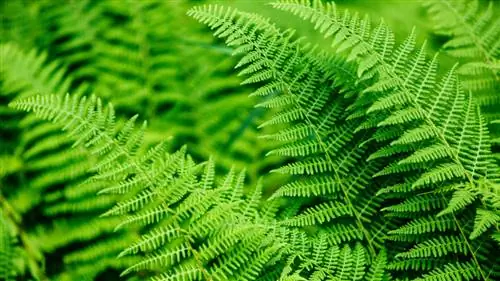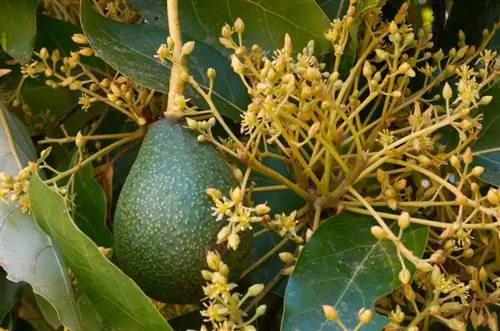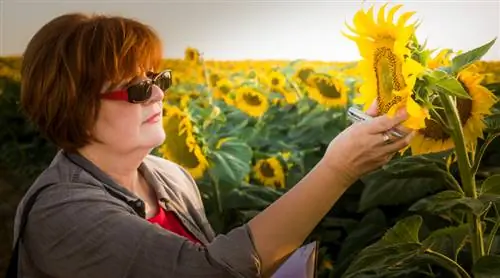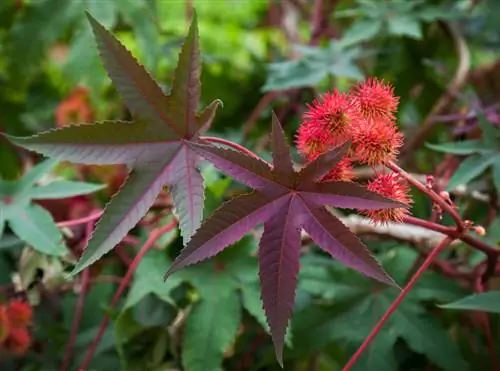- Author admin [email protected].
- Public 2023-12-16 16:46.
- Last modified 2025-01-23 11:20.
Ferns have been widespread on this planet since ancient times. You can find them at every turn, especially in the tropics and in the rainforest. But what characteristics define ferns? How are these plants structured from bottom to top?
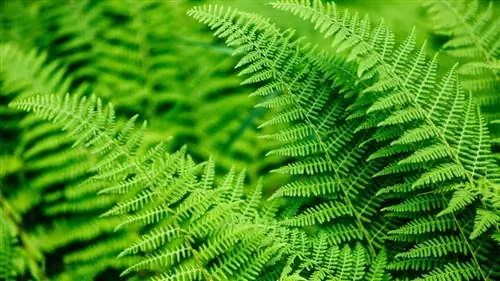
How is a fern structured and how does it reproduce?
The fern consists of an underground rhizome, a shoot axis or trunk and the 2nd floor: the fronds, which form the foliage. Ferns have no flowers, fruits or seeds, but are spore plants and reproduce via spores located in spore containers on the underside of the fronds.
Basement: The Roots
The fern usually forms a rhizome beneath the surface of the earth. The fine roots are attached to it. Some fern species, such as the funnel fern, also produce several meter-long runners. With them, these plants tend to spread uncontrollably.
1. Floor: The shoot axis or the trunk
Just above the ground, these herbaceous perennials form a shoot axis or stem. These are equipped with a sophisticated water pipe system. There are fine tubes that carry water from the roots all the way up to the leaves. The exception is the tree fern. It does not have a shoot axis, but rather a woody trunk.
2. Floor: The Fronds
The next level creates the chlorophyll-rich foliage. The different types and varieties of ferns allow for numerous shapes and colors of foliage. Whether green, red or silvery-gray, single-pinnate, double-pinnate or multi-pinnate - the variety of facets is great.
The leaves, which are called fronds in the fern, are composed of a leaf blade and a petiole. As a rule, the palm fronds hang down in an arch shape. When they shoot they are rolled up in an interesting way. They can be deciduous, wintergreen or evergreen.
Ferns have no flowers, fruits or seeds
Other characteristic features of ferns are the following:
- have no flowers
- do not form fruits or seeds
- are so-called spore plants
- Spores are used for reproduction
- Spores are located in spore containers on the underside of the fronds
- Spores mature in summer and are spread by the wind
Tips & Tricks
Even if ferns do not produce fruits or seeds. They spread rapidly with the help of their spores and do not value losses. Think carefully beforehand whether you really want to plant a fern.

